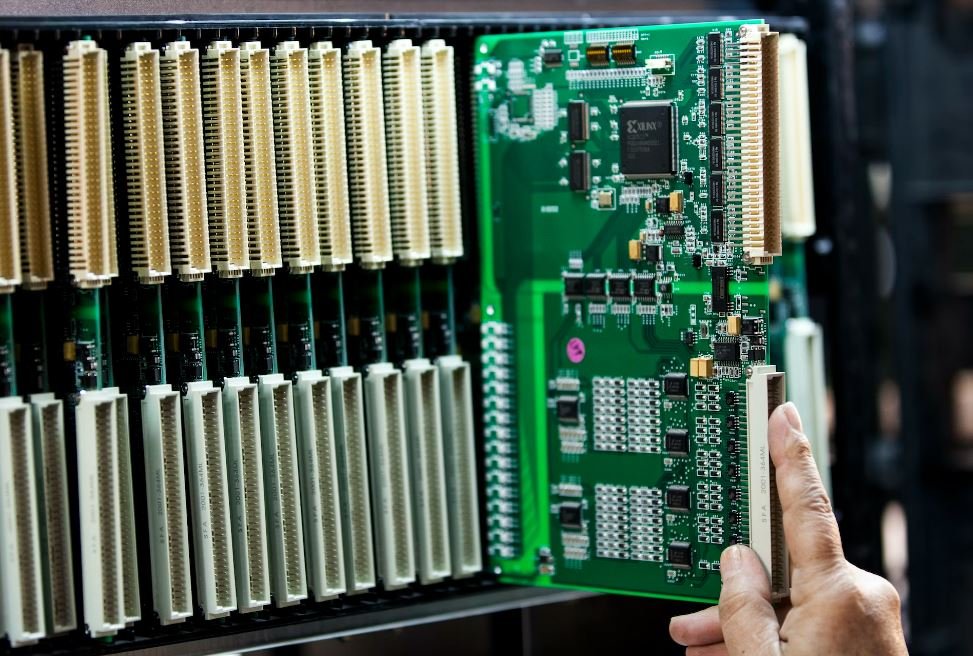No Code VR Development
Virtual Reality (VR) is an exciting technology that is revolutionizing various industries, from gaming and entertainment to education and healthcare. Traditionally, developing VR applications required extensive coding knowledge and expertise. However, with the emergence of no-code VR development platforms, creating immersive experiences has become more accessible and efficient for developers and non-technical users alike.
Key Takeaways
- No code VR development platforms enable developers and non-technical users to create VR experiences without extensive coding knowledge.
- These platforms offer intuitive visual interfaces, drag-and-drop functionality, and pre-built templates to simplify the development process.
- No code VR development reduces development time and costs, making VR more accessible to individuals and businesses.
The Rise of No Code VR Development
Traditionally, developing VR applications required deep knowledge of programming languages such as **C# and C++**. This barrier to entry limited VR development to a small pool of skilled programmers. However, no code VR development platforms have emerged in recent years, enabling users with little to no coding experience to create VR experiences. These platforms provide **intuitive visual interfaces** and **drag-and-drop functionality** to design environments, import assets, and customize interactions. Using pre-built templates and **starter kits**, users can quickly assemble VR scenes and interactions without writing code.
The Benefits of No Code VR Development
The advantages of no code VR development are significant for both developers and non-technical users. By eliminating the need for extensive coding knowledge, no code platforms reduce the **learning curve** and empower a broader range of individuals to create VR experiences. This democratization of VR development opens up new opportunities for smaller teams, independent developers, and non-technical users to participate and innovate in the growing VR industry.
Efficiency and Cost-Effectiveness
No code VR development tools improve efficiency and reduce development time by offering **pre-built assets** and **interactions**, as well as in-platform collaboration features. Users can quickly prototype and iterate on their VR experiences without the need for lengthy coding processes, resulting in faster development cycles. Additionally, the elimination of coding requirements reduces the need for specialized VR developers, making VR development more **cost-effective** for businesses and individual creators.
Tables
| Platform | Features |
|---|---|
| Platform A | Drag-and-drop functionality, pre-built templates, collaboration tools |
| Platform B | Intuitive visual interface, asset import, interactive elements |
Unleashing Creativity
No code VR development platforms enable aspiring VR creators to unleash their creativity and bring their ideas to life. By offering intuitive tools and templates, these platforms make it easy to build immersive environments and interactive experiences. Users can experiment with different scenarios, natural environments, historical sites, and more, without the need for extensive coding knowledge. This accessibility encourages innovation and diverse applications of VR technology.
Challenges and Limitations
- No code VR development platforms may have limitations when it comes to advanced customization and complex interactions.
- Performance optimization may be challenging due to the lack of low-level code control.
- App compatibility across different VR devices and platforms can be an issue.
Tables
| No Code Platform | Supported VR Devices |
|---|---|
| Platform A | Oculus Rift, HTC Vive, Windows Mixed Reality |
| Platform B | Oculus Quest, PlayStation VR, Google Cardboard |
| Platform C | Oculus Quest, HTC Vive, PlayStation VR, Windows Mixed Reality |
The Future of No Code VR Development
As VR continues to gain traction in various industries, the demand for simplified development processes will rise. No code VR development platforms are likely to evolve further, addressing current limitations and offering more advanced customization options. Additionally, the integration of artificial intelligence and machine learning capabilities may enhance these platforms’ abilities to analyze user behavior and automate certain aspects of VR experience creation, further streamlining the development process.

Common Misconceptions
Misconception 1: No Code VR Development is Only for Experienced Programmers
One common misconception is that No Code VR Development is only suitable for experienced programmers. However, this is not true because No Code VR Development platforms provide a user-friendly interface that allows individuals with little to no coding experience to create VR experiences.
- No Code VR Development platforms offer drag-and-drop functionality, making it accessible to beginners.
- Tutorials and documentation are available, helping users to learn and understand the platform.
- No Code VR Development platforms often have prebuilt templates and assets that can be customized without any coding knowledge.
Misconception 2: No Code VR Development Produces Low-Quality Results
Another misconception is that No Code VR Development produces low-quality VR experiences. However, with advancements in technology, No Code VR Development platforms have improved, allowing users to create immersive and high-quality VR content.
- Many No Code VR Development platforms now support realistic graphics and textures.
- VR experiences created with No Code VR Development can include interactive elements and engaging designs.
- No Code VR Development platforms offer various features and tools to enhance the visual and audio experience.
Misconception 3: No Code VR Development Lacks Customization Options
Some individuals believe that No Code VR Development lacks customization options and restricts users to predefined templates. However, this is not the case as No Code VR Development platforms offer a range of customization options to tailor the VR experiences to users’ specific needs.
- No Code VR Development platforms provide options to customize visuals, including textures, colors, and animations.
- Users can incorporate their own media assets, such as images, videos, and 3D models, into the VR experience.
- Many No Code VR Development platforms support scripting or logic systems, allowing users to create interactive elements and behaviors.
Misconception 4: No Code VR Development is Limited to Gaming Experiences
Some people mistakenly believe that No Code VR Development is only suitable for creating gaming experiences. However, No Code VR Development platforms have diverse applications beyond gaming and can be used for various industries.
- No Code VR Development can be employed in education to create virtual classrooms and training simulations.
- Architects and designers can utilize No Code VR Development to visualize and present their projects in virtual spaces.
- E-commerce businesses can create virtual showrooms using No Code VR Development to enhance the online shopping experience.
Misconception 5: No Code VR Development Is Expensive
Lastly, it is a common misconception that No Code VR Development is expensive and requires a significant financial investment. However, there are affordable and even free No Code VR Development platforms available, making it accessible to individuals and businesses with various budgets.
- Some No Code VR Development tools offer free trial periods, allowing users to explore the platform before committing financially.
- Open-source No Code VR Development platforms provide cost-effective options for those on a limited budget.
- No Code VR Development eliminates the need for costly hardware since it can be developed and experienced on existing devices.

In recent years, the advancement in technology has paved the way for groundbreaking developments in virtual reality (VR) experiences. One notable progress is the emergence of no code VR development tools, which empower individuals to create immersive VR projects without requiring extensive coding knowledge. Here are ten tables that showcase the impact and potential of no code VR development in various domains.
1. VR Market Size (in Billions)
– Gaming: $6.3
– Health & Medicine: $3.8
– Education & Training: $2.5
– Tourism & Hospitality: $1.9
– Real Estate: $1.7
The table above illustrates the estimated market sizes for different sectors in the VR industry. It demonstrates how gaming dominates the market, followed by sectors like health and medicine, education and training, tourism and hospitality, and real estate.
2. VR Usage by Age Group (%)
– <18: 14
- 18-24: 26
- 25-34: 18
- 35-44: 12
- 45-54: 10
- 55+: 20
This table presents the distribution of VR usage across different age groups. It reveals that the younger demographic, particularly those aged 18-24, shows the highest percentage of VR usage.
3. Industries Utilizing VR
- Automotive
- Aerospace
- Entertainment
- Healthcare
- Architecture
- Engineering
- Retail
The table above highlights various industries making extensive use of VR technologies for different purposes, including design visualization, training simulations, and customer experiences.
4. Types of VR Experiences
- Gaming
- Virtual tourism
- Simulations
- Training & education
- Experiential marketing
- Social VR
This table presents different types of VR experiences that people can engage with, ranging from gaming to virtual tourism, simulations, training and education, experiential marketing, and socializing in virtual worlds.
5. VR Devices in Use
- Oculus Quest 2
- HTC Vive Pro
- Sony PlayStation VR
- Valve Index
- Samsung Odyssey+
- Oculus Rift S
The table above showcases some popular VR devices available in the market, providing users with unique and immersive experiences.
6. VR Applications in Healthcare
- Surgical simulations
- Pain management
- Rehabilitation
- Mental health therapy
- Medical training
- Phobia treatments
This table demonstrates the diverse applications of VR in the healthcare sector, emphasizing its potential in surgical simulations, pain management, rehabilitation, mental health therapy, medical training, and overcoming phobias.
7. Benefits of No Code VR Development
- Increased accessibility
- Rapid prototyping
- Reduced development costs
- Easier collaboration
- Enhanced user experience
- Democratization of VR creation
The table above highlights the advantages of utilizing no code VR development tools, including increased accessibility, rapid prototyping, reduced development costs, easier collaboration, enhanced user experience, and democratization of VR creation.
8. VR Growth Projections (2021-2026)
- CAGR (Compound Annual Growth Rate): 42%
- Revenue by 2026: $34.1 billion
This table showcases the projected growth rate and revenue for the VR industry from 2021 to 2026, indicating a significant increase in market size and demand.
9. Major Players in the No Code VR Development Space
- Unity
- Unreal Engine
- 8th Wall
- ARCore
- A-Frame
- ZapWorks
The table above presents some of the major players involved in the development of no code VR tools, enabling creators to build immersive experiences without extensive coding knowledge.
10. Examples of No Code VR Projects
- Virtual art galleries
- Interactive simulations of historical events
- Virtual concert experiences
- Virtual training environments
- AR-enhanced architectural visualizations
This table showcases a range of exciting and innovative no code VR projects that have been created, including virtual art galleries, interactive historical simulations, virtual concert experiences, virtual training environments, and architectural visualizations with augmented reality.
In conclusion, no code VR development has revolutionized the way individuals and various industries approach virtual reality. It has brought accessibility, creativity, and unprecedented opportunities for people to create immersive experiences without the need for extensive coding knowledge. As the market continues to grow rapidly, the future of no code VR development holds enormous potential for innovation, learning, and entertainment.
Frequently Asked Questions
What is no code VR development?
No code VR development refers to the process of creating virtual reality experiences without writing any code. It allows individuals with no coding experience to design and build VR applications using visual interfaces and pre-built components.
How does no code VR development work?
No code VR development platforms provide a range of tools and features that allow users to create VR experiences. These platforms typically offer drag-and-drop interfaces, customizable templates, and pre-defined components that can be used to build virtual environments, interactive elements, and user interactions.
What are the advantages of using no code VR development?
Using no code VR development eliminates the need for coding skills, making it accessible to a wider audience. It allows for rapid prototyping and iteration, as changes can be made easily through the visual interface. Additionally, it reduces development costs and time required compared to traditional coding methods.
Can I create complex VR applications with no code VR development?
Yes, you can create complex VR applications using no code VR development platforms. These platforms often provide advanced features such as scripting interfaces, physics simulations, and artificial intelligence integration, allowing users to create sophisticated and realistic experiences without coding.
Are there any limitations to no code VR development?
While no code VR development offers a range of possibilities, it does have some limitations. Users may encounter limitations in terms of customization options, flexibility, and extensibility compared to traditional coding methods. Additionally, complex interactions or custom functionality may require coding skills or programming knowledge.
What types of VR experiences can be created with no code VR development?
No code VR development platforms support the creation of various types of VR experiences. These can include 360-degree videos, interactive simulations, architectural walkthroughs, games, educational experiences, and training simulations.
What platforms or tools are available for no code VR development?
There are several platforms and tools available for no code VR development, including platforms like Unity’s Visual Scripting, Unreal Engine’s Blueprint system, and web-based tools like CoSpaces and A-Frame. These platforms provide users with intuitive interfaces to create VR experiences without coding.
Can I publish and distribute my no code VR applications?
Yes, most no code VR development platforms allow you to publish and distribute your applications. They provide options for exporting applications to different platforms like Windows, Mac, iOS, Android, and virtual reality headsets. Some platforms also offer integration with app stores for easier distribution.
Can I collaborate with others on no code VR development projects?
Yes, many no code VR development platforms offer collaboration features. These features allow multiple users to work on the same project simultaneously, making it easier to collaborate with team members or clients and streamline the development process.
Can I monetize my no code VR applications?
Yes, you can monetize your no code VR applications. Some platforms offer options for integrating in-app purchases, advertisements, or subscription models, allowing you to generate revenue from your VR experiences. Additionally, you can sell your applications directly or explore partnerships with VR content distribution platforms.





